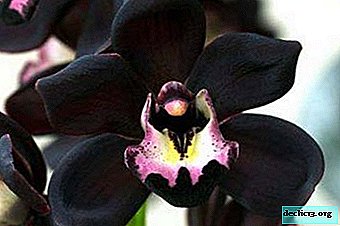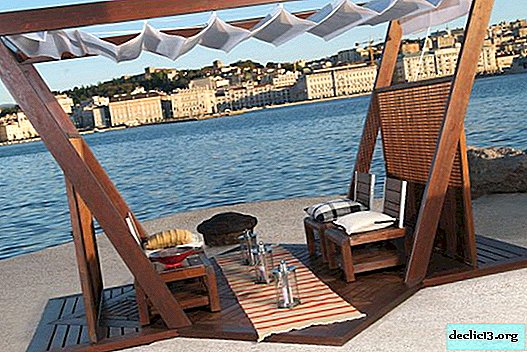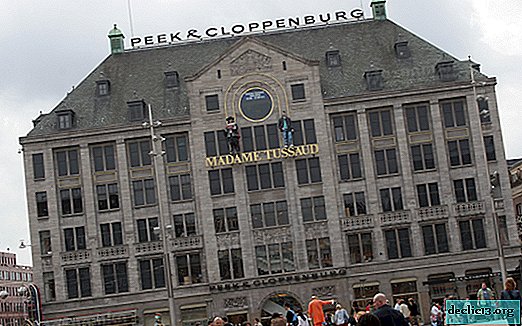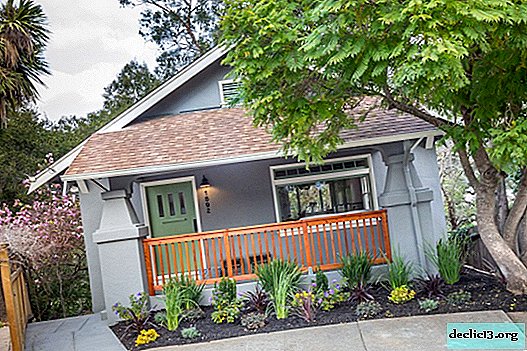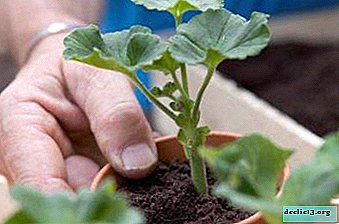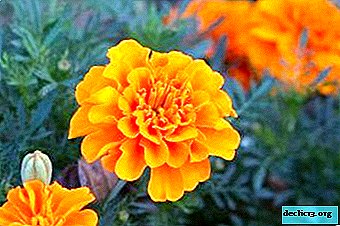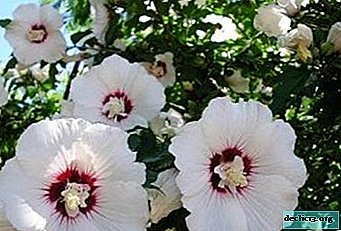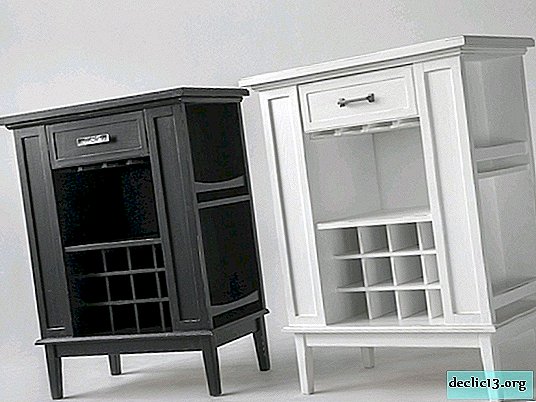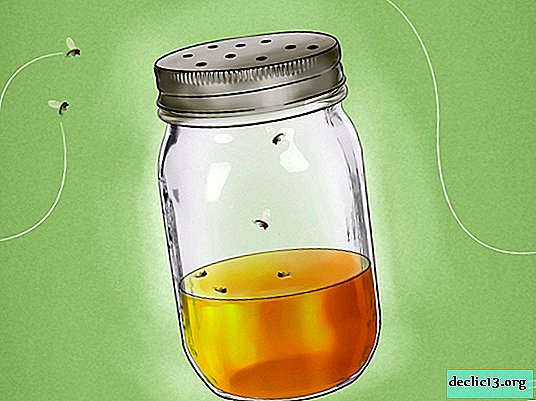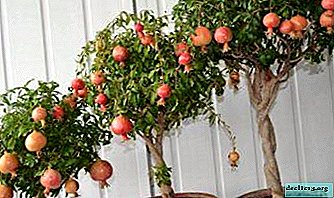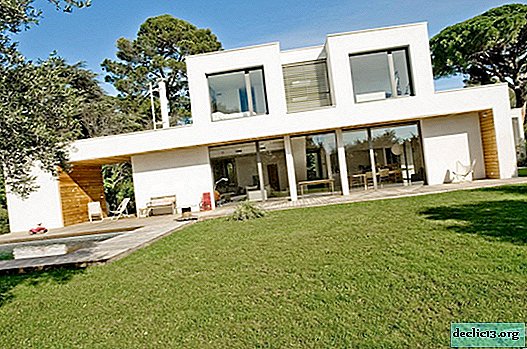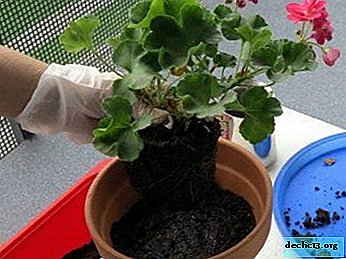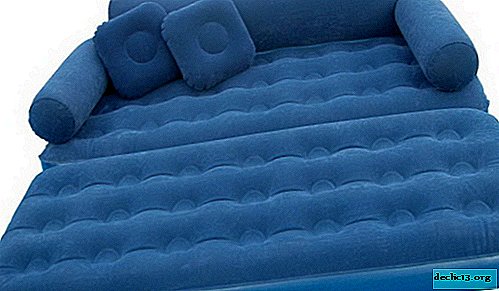Hybrid rhododendron Nova Zembla - features of the variety, the nuances of care
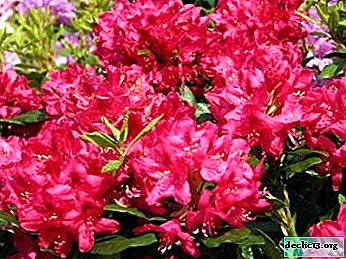
Absolutely all varieties of Rhododendrons belong to the category of beautiful decorative shrubs. In addition to a huge assortment of spectacular flowers, surprising in its size and shape, the foliage of the bush is also incredibly decorative.
She is very colorful and even able to change her shades in the autumn. No wonder all designers like Rhododendrons so much, and some consider them even more interesting than roses. In the article we will try to tell you all the most important things about the wonderful variety of rhododendron - Nova Zembla.
Brief definition
Rhododendron Nova Zembla is a perennial evergreen variety. The shrub has excellent winter hardiness and decorativeness. Its height can reach two meters and the same diameter size.
Detailed description
 This is a tall, sprawling shrub with a domed crown shape. It grows quickly, sometimes it can bloom for the second time in a season - in autumn.
This is a tall, sprawling shrub with a domed crown shape. It grows quickly, sometimes it can bloom for the second time in a season - in autumn.
- Leaves - large leathery, dark green on the outside, gray on the back. The shape is elongated, narrow.
- Flowers - beautiful and large, reaching a diameter of 6 - 10 cm. They have a very spectacular rich ruby color with chocolate splashes in the center, their anthers are golden. The shape resembles a bell, collected in large spherical inflorescences of about 12 pieces each.
- Trunk - powerful, strong branching, the color of the bark is gray.
- The root system is superficial.
History of occurrence
Rhododendron Nova Zembla, or Nova Zembla - a hybrid variety of the Dutch collection.
Reference. It was obtained by breeder Kostner in 1902 when crossing the Parsons Grandiflorum variety and another (nameless) variety of the Katevbinsky Rhododendron with red flowers.He received his name in honor of the island, which is located in the Arctic Ocean - New Earth.
What is the difference from the rest of the species?
It differs from other species in increased winter hardiness and endurance. He has very extensive growing areas. Also, its bright flowers collected in inflorescences - balls, have a large size. All these outstanding qualities make this variety extremely popular.
Bloom
- When and how - This variety begins to bloom in late spring (in May) and continues in June. During the flowering period (almost two months), the whole bush is covered with large bright inflorescences - spheres, its appearance is simply delightful.
- Care before and after flowering - with the beginning of spring, it is necessary to carefully monitor the watering and feeding. In April, you must feed the plant. Do not allow the earth near the shrub to dry out, add mulch. Still required to maintain humidity around the rhododendron. And after flowering, the first thing to cut off all the peduncles and feed.
- What to do if it does not bloom - if such an unpretentious shrub does not want to bloom, then the whole thing, most likely, is in the wrong place for him. We'll have to find a decent place and do a transplant, before carefully examining all the recommendations.
Use in landscape design
This rhododendron is simply of a heroic size, therefore in a small space he will naturally be cramped. It will look gorgeous in a large garden, by the pond, for example, or near the house. Also a good decision would be to make a group landing, picking up combinations of colors of different varieties to your liking.
Step-by-step instructions for landing and care

- Choosing a landing place - need partial shade to get the diffused light on the bush, it can be planted next to tall trees (preferably coniferous). You can’t choose a place in understated areas, nor should it be blown by the winds.
- What should be the soil - it should be light, nutritious, loose. Humidity is desirable moderate, in wetlands and with a high occurrence of groundwater, Rhododendron will not grow. If your garden soil is not suitable, then you need to make special soil at the planting site to improve it. You can compose it from:
- peat;
- turf land;
- compost
- charcoal;
- sand;
- humus;
- perlite.
Take all components (except coal) in equal parts, and then add a little coal, mix and the required soil is ready.
- Landing - The most suitable time for her is spring.
- After we have decided on the place, we are preparing a hole for the bush, not very deep (about half a meter), but wide.
- Be sure to add any drainage layer there, then pour a thin layer of pine needles and on top a little prepared soil.
- We put the plant in the middle and pour soil on the sides, trying not to deepen more than necessary - the root neck should be on top.
- Now it remains to water, spray and mulch.
- Temperature - Rhododendron Nova Zembla easily withstands even severe frost, the lowest critical temperature is 32 degrees below zero, and the highest is plus 35 degrees. Comfortable temperature for him is in the range from minus 10 to plus 25.
- Watering - it is necessary to water often and in plenty, since the plant is very powerful and needs a lot of moisture.
Attention! You can use only rainwater, in extreme cases - standing.
- Top dressing - Rhododendrons are responsive to the introduction of organic fertilizing. In spring, before flowering, it is necessary to fertilize well-rotted cow manure with the addition of peat, the second time this composition is applied in the summer, after flowering. You can also use balanced special fertilizers for Rhododendrons (gradually sprinkle around the bush).
- Pruning - only sanitation pruning after wintering is needed to remove broken or frozen branches. It is also worth removing all the flower stalks when the flowering is over.
- Transfer - shrubs of this species are not very supportive of transplanting, but if the plant needs a more comfortable place to pick up, then, of course, you need to start as soon as possible. But one should not rush into the choice of a place, it’s better once again to make sure that it is chosen correctly, all “requests” are taken into account.
- How to prepare for winter - the most important thing for this period is to conduct a good moisture-charging irrigation and increase the height of the mulching layer (at least 15 cm). It is also advisable to cover the bush with a spanbond from above, it will protect both from freezing and from burning out (in frost the sun can be very bright).
How to propagate?
 Rhododendron Nova Zembla can be propagated by cuttings and layering.
Rhododendron Nova Zembla can be propagated by cuttings and layering.
- Cuttings - prepared in the second half of June, cuttings (8 cm long) are treated with a growth stimulator, and then inserted into the prepared substrate from sand and peat. The lower cut of the cuttings must necessarily be oblique, approximately 45 degrees. To get a good result, the rooting process is best done in a greenhouse, where it is easy to create the right humidity and temperature. When 3 to 4 leaflets are formed on the cuttings, they can be planted in pots, and it will be possible to plant them in a permanent place in a year.
- Layering - this option is even simpler, in the spring they drop the lower branch into the ground, fixing for reliability with a wooden slingshot or a bracket. Carefully taken care of her.Important! The soil should never dry up, periodically need to be watered with a solution of heteroauxin (for better rooting). In a year, in the spring or better in the fall, a small bush will be ready to separate and live independently.
Diseases and Pests
Due to any errors in the care of Rhododendron, pests can most often appear:
- Rhododendral bug - one of the most dangerous pests. You can find it only on the back of the sheet - on the brown dots, where it pierces the leaves. Processing by “Aktara” or “Fitoverm” will help.
- Spider mite - a thin cobweb on the leaves is noticeable - to be treated with Aktara.
Also shrub may be affected by the following diseases: leaf mosaic, rust - processing by Confidor will help here.
Prevention of various problems
Proper care will be the main prevention of any problems. But, of course, it is impossible to foresee everything, so it will be useful to treat Rhododendron with Hom and Bordeaux liquid several times during the season.
Conclusion
Rhododendron Nova Zembla should appear on your site unequivocally. After all, one of his “solos” will be enough to completely transform the surrounding space, he is so spectacular. And if you take into account its remarkable adaptability to low and high temperatures, then you should not think for a long time. With such a handsome man, you can put a chair nearby - a rocking chair and full relaxation is guaranteed.
All about boarding and care is more detailed in the video:


